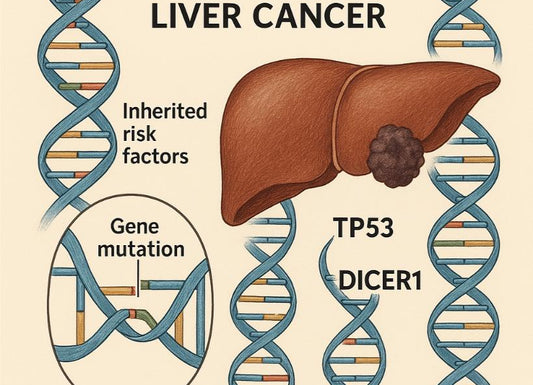Is Hepatitis an STD? Types, Transmission, and Prevention
 Written By
Blen Shumiye, MD
Written By
Blen Shumiye, MD

You may have recently heard the term hepatitis during a doctor’s visit, a health screening, or while reading about liver health—and understandably, it can spark a lot of questions. One of the most common concerns people have is whether hepatitis is considered a sexually transmitted disease (STD).
Here’s the short answer: not all forms of hepatitis are spread through sexual contact. In fact, only certain types—especially hepatitis B—are classified as STDs. Others, like hepatitis A and E, are usually spread through contaminated food or water, while hepatitis C is primarily transmitted through blood-to-blood contact.
In this article, we’ll explore what hepatitis is, the different types of viral hepatitis, how each is transmitted, whether it qualifies as an STD, symptoms to watch for, prevention strategies, and available treatments to protect your liver health.
What Is Hepatitis?
Hepatitis means inflammation of the liver. While the liver is highly resilient, chronic or severe inflammation can lead to scarring (fibrosis), advanced liver disease (cirrhosis), liver failure, or even liver cancer.
Common Causes of Hepatitis
-
Viral infections: Hepatitis A, B, C, D, E
-
Alcohol misuse: Alcoholic hepatitis
-
Toxins and medications: Drug-induced hepatitis (e.g., acetaminophen overdose)
-
Autoimmune hepatitis: When the immune system mistakenly attacks liver cells
-
Metabolic disorders: Such as fatty liver disease leading to inflammation
What Are the Main Types of Viral Hepatitis?
There are five primary hepatitis viruses—A, B, C, D, and E. Each spreads differently, carries different risks, and has varying links to sexual transmission.
Hepatitis A
-
Cause and Spread: Usually transmitted through ingestion of contaminated food or water. Outbreaks are often linked to poor sanitation and close personal contact.
-
STD Connection: Not typically an STD, but transmission can occur during oral-anal sex.
-
Course of Illness: Causes only acute infection. Does not lead to chronic disease. Most people recover fully within weeks to months.
-
Prevention: A safe and effective vaccine is available. Good hand hygiene and safe food/water practices also help.
Hepatitis B
-
Cause and Spread: Transmitted through blood, semen, and other body fluids. Routes include sexual contact, sharing needles, mother-to-child transmission during childbirth, and occupational exposure.
-
STD Connection: Yes. Hepatitis B is classified as a sexually transmitted disease and is one of the most easily spread viral infections through sexual contact.
-
Course of Illness: Can be acute or chronic. Chronic HBV can lead to cirrhosis, liver failure, and liver cancer. Hundreds of millions worldwide live with chronic HBV.
-
Prevention: A highly effective vaccine exists. Practicing safe sex and avoiding needle sharing are essential.
Hepatitis C
-
Cause and Spread: Primarily spread through blood-to-blood contact, most commonly via sharing needles or unsafe blood transfusions.
-
STD Connection: Possible but less common. Risk is higher among people with multiple partners and individuals with HIV.
-
Course of Illness: Many acute infections become chronic. Chronic HCV is a leading cause of liver transplantation.
-
Prevention: No vaccine is available, but modern treatments can cure more than 95% of cases.
Hepatitis D
-
Cause and Spread: Occurs only in people already infected with hepatitis B. Transmitted through blood exposure or sexual contact.
-
STD Connection: Yes—but only in those who already have HBV.
-
Course of Illness: Co-infection with HBV and HDV causes more severe disease and faster progression to cirrhosis.
-
Prevention: Preventing HBV through vaccination also prevents HDV.
Hepatitis E
-
Cause and Spread: Typically spread through contaminated water in areas with poor sanitation.
-
STD Connection: Rarely transmitted sexually; most cases are food- or waterborne.
-
Course of Illness: Generally causes acute illness only, though chronic cases can occur in immunocompromised individuals.
-
Prevention: Clean water, proper sanitation, and safe food handling are key.
See related: Understanding the Acute Hepatitis Panel: What You Need to Know
Is Hepatitis an STD?
Here’s the clear breakdown:
-
Hepatitis B: Definitely an STD—commonly spread through sex.
-
Hepatitis A: Sometimes, particularly through oral-anal sex.
-
Hepatitis C: Possible but less efficient. Risk is higher in certain groups.
-
Hepatitis D: Yes, but only if the person already has HBV.
-
Hepatitis E: Generally not considered an STD.
In short: Hepatitis B is the main type strongly linked to sexual transmission.
How Hepatitis Is Transmitted
Understanding the main routes of transmission helps in preventing hepatitis infections.
1. Blood-to-Blood Contact
Sharing needles during injection drug use is the leading driver of new hepatitis C (HCV) infections. Needle-stick injuries carry about a 0.2% risk of HCV and up to 30% for hepatitis B (HBV) if the person is unvaccinated.
While screened blood transfusions are now safe in most countries, unsterilized tattoo or piercing equipment still poses risks in unregulated settings.
2. Sexual Contact
Sexual transmission is a key route for hepatitis B (HBV). In the U.S., heterosexual contact accounts for nearly 40% of adult cases, and sex between men contributes about 25%. Hepatitis C (HCV) is rarely transmitted sexually, except among men who have sex with men with HIV.
3. Mother-to-Child Transmission
Infants born to mothers positive for hepatitis B surface antigen (HBsAg) and hepatitis B "e" antigen (HBeAg) have a 70%-90% chance of acquiring perinatal HBV infection, and 85%-90% of infected infants will become chronic HBV carriers.
4. Contaminated Food and Water
Hepatitis A (HAV) and hepatitis E (HEV) spread mainly through unsafe food or water. HAV often causes household outbreaks, with infection rates of 12–22% among unvaccinated contacts. HEV, common in regions with poor sanitation, can be severe in pregnancy, where third-trimester fatality rates reach 20–30%.
5. Close Household Contact
HBV can survive on surfaces for up to a week, making shared items like razors or toothbrushes risky. Studies show up to 30% of household members of people with chronic HBV may also test positive. HCV spreads less easily this way, but blood-contaminated personal items still carry some risk.
Symptoms and Complications
Many people with viral hepatitis may not realize they are infected, particularly in the early stages.
Acute Infection Symptoms
-
Fatigue
-
Fever
-
Loss of appetite
-
Abdominal discomfort
-
Jaundice
-
Dark urine
-
Nausea and vomiting
Chronic Infection Symptoms
-
Often silent for years
-
Progressive, unnoticed liver damage
-
May eventually lead to cirrhosis, liver cancer, or liver failure
Potential Complications
-
Cirrhosis: Irreversible scarring of the liver
-
Liver failure: Inability of the liver to perform vital functions
-
Liver cancer (hepatocellular carcinoma): Especially in chronic HBV or HCV
-
Extrahepatic symptoms: Fatigue, skin conditions, joint pain
How is hepatitis diagnosed?
If you think you may have been exposed to hepatitis or if you’re noticing symptoms getting tested is the only way to know for sure. Hepatitis can’t be confirmed just by symptoms.
Your healthcare provider may recommend a few different tests, including:
-
Blood tests: These check for viral antigens (parts of the virus), antibodies (your body’s immune response), and sometimes the actual amount of virus in your blood (viral load). Each hepatitis type has a specific blood marker.
-
Liver function tests (LFTs): These measure enzymes and proteins your liver releases when it’s inflamed or damaged. High levels can signal liver stress.
-
Ultrasound or imaging: Non-invasive imaging can show if your liver is swollen, scarred, or otherwise affected.
-
Liver biopsy (in select cases): A tiny sample of liver tissue is taken to see the extent of damage. This is less common today, thanks to improved blood tests and imaging.
In most cases, simple blood work is enough to make a clear diagnosis. If you’re at risk or just want peace of mind, you can ask your provider for a hepatitis panel, a group of tests that screens for multiple hepatitis viruses at once.
Read more on: What is Hepatitis B Surface Antibody QL Reactive Meaning? A Deep Dive
How Can You Prevent Sexually Transmitted Hepatitis?

Vaccination
-
Hepatitis A vaccine: Safe, effective, and recommended for children, travelers, and high-risk groups.
-
Hepatitis B vaccine: Part of routine childhood immunizations; also recommended for at-risk adults.
-
No vaccines yet for hepatitis C, D, or E (research is ongoing).
Safe Sexual Practices
-
Consistent condom use
-
Limiting number of sexual partners
-
Routine testing and treatment for STDs
Harm Reduction
-
Avoid sharing needles or drug preparation equipment
-
Use needle exchange programs and supervised injection services where available
Medical and Travel Safety
-
Ensure sterile equipment is used during medical procedures
-
When traveling, drink bottled or boiled water and avoid raw or undercooked shellfish or meat in high-risk regions
Screening and Early Detection
-
Blood tests can detect HBV and HCV
-
Regular screening is recommended for at-risk groups
-
Early detection allows timely treatment and prevents complications
What Treatments Are Available?
-
Hepatitis A & E: Supportive care only. Most people recover fully without lasting damage.
-
Hepatitis B: Antiviral medications may control chronic infection and prevent complications; lifelong monitoring is often needed.
-
Hepatitis C: Highly effective direct-acting antivirals can cure over 95% of cases.
-
Hepatitis D: Treatment is limited, often focused on managing HBV.
-
General management: Avoid alcohol, maintain a balanced diet, and undergo regular liver monitoring.
What Do Health Experts Recommend?
According to the CDC and World Health Organization:
-
Universal hepatitis B vaccination for infants
-
Hepatitis A vaccination for at-risk adults
-
Regular screening for hepatitis B and C
-
Public health education to reduce stigma and increase awareness
-
Wider access to safe testing and effective treatments
Final Thoughts
Hepatitis remains a major global health issue, but understanding its different types, how they spread, and how to prevent them makes a big difference. While hepatitis B is the most clearly recognized as a sexually transmitted infection, other forms have their own risks and routes of transmission. The good news is that prevention is often within reach—through vaccination, practicing safer sex, avoiding needle sharing, and maintaining clean food and water sources.
If you think you may have been exposed to hepatitis or are at higher risk, getting tested and talking with a healthcare provider is one of the most important steps you can take. With early detection, modern treatments, and simple preventive measures, it’s possible to protect your liver health and reduce the spread of hepatitis worldwide.
Worried about liver?
Ribbon Checkup’s at-home liver health test makes it easy to track key liver function markers—accurately, privately, and on your schedule.
References
admin. (2025, February 6). Viral Hepatitis (A, B, C, D and E). American Sexual Health Association. https://www.ashasexualhealth.org/hepatitis/
CDC. (2025, February 18). Viral Hepatitis Among Sexually Active Adults. Viral Hepatitis. https://www.cdc.gov/hepatitis/hcp/populations-settings/sexually-active.html
Freeman, D. (2010, January 10). Hepatitis and Sex: Frequently Asked Questions. WebMD. https://www.webmd.com/hepatitis/hepatitis-and-sex-frequently-asked-questions
Hepatitis B Foundation: Hep B Transmission and High Risk Groups. (2020). Hepb.org. https://www.hepb.org/prevention-and-diagnosis/transmission/
item. (2019). Who.int. https://www.who.int/news-room/questions-and-answers/item/hepatitis

Dr. Blen is a seasoned medical writer and General Practitioner with over five years of clinical experience. She blends deep medical expertise with a gift for clear, compassionate communication to create evidence-based content that informs and empowers. Her work spans clinical research, patient education, and health journalism, establishing her as a trusted voice in both professional and public health spheres.





